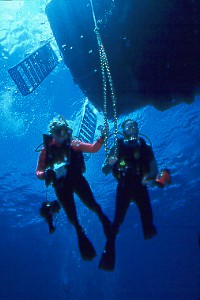| Home |
THE EXUMAS:BAHAMAS - A Sea of Changes
The Bahamas lie only 50 miles or so off our eastern coast in Florida, and close enough for people
to pop over for a weekend of diving and fishing. It is famous for its sharks, long lining having been
banned almost 20 years ago. The best known species are the Caribbean Reef, Great Hammerhead, Lemon and
Oceanic Whitetip, among others, that range from the mangroves to the open ocean. (note:There has been a 90% decline
in shark populations here and around the world.)
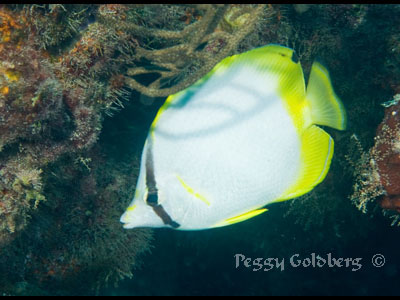 Butterfly Fish Butterfly Fish
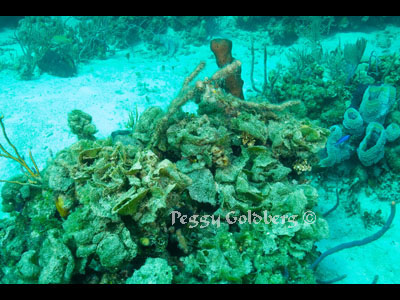 Algae Everywhere Algae Everywhere
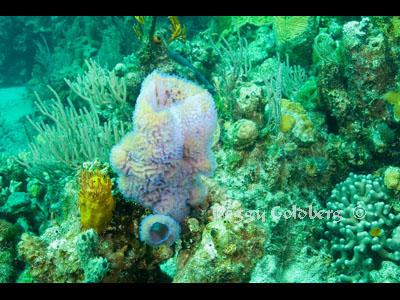 Azure Vase Sponge Azure Vase Sponge
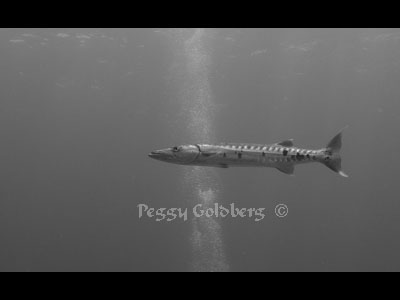 Barracuda in B/W Barracuda in B/W
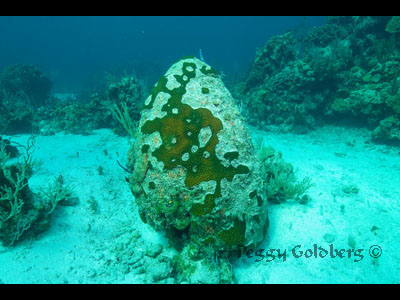 Brain Coral - Damaged Brain Coral - Damaged
 Exumas Land Sea Park Exumas Land Sea Park
 Exumas Sunset Exumas Sunset
 Shark Shark
 Laughing Gull Laughing Gull
 Invasive Lionfish Invasive Lionfish
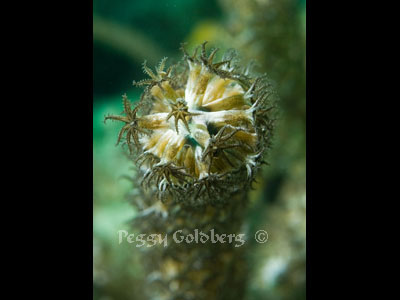 Coral Polyps Coral Polyps
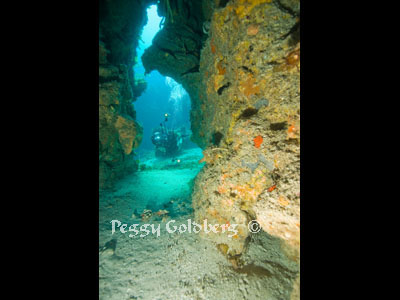 Swimthrough Swimthrough
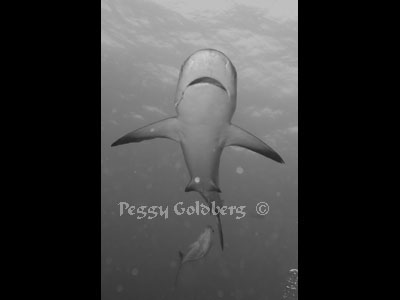 Shark in B/W Shark in B/W
 Lionfish Lionfish
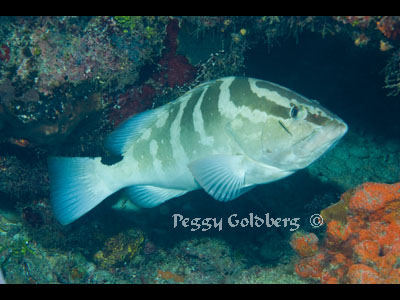 Nassau Grouper Nassau Grouper
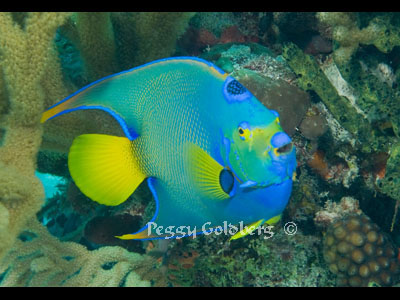 Queen Angel Queen Angel
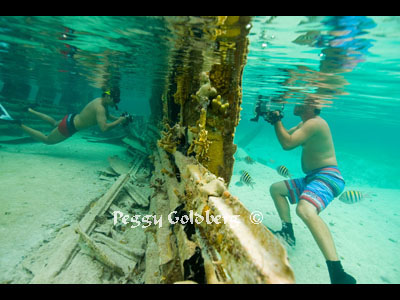 Snorkelers on Wreck Snorkelers on Wreck
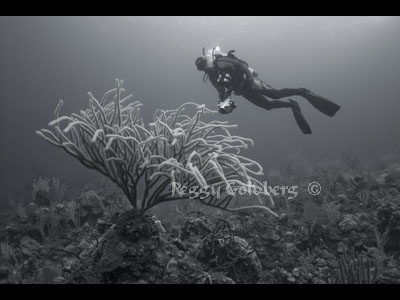 Diver and Soft Corals in B/W Diver and Soft Corals in B/W
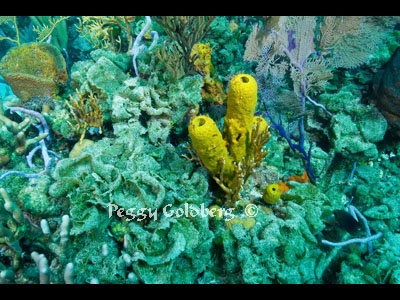 Yellow Tube Sponges amongst algae Yellow Tube Sponges amongst algae
 Shark Shark
The Bahamas has a wide variety of reefs, walls, blue holes and wrecks to explore.
This article, however is not so much about the wonders of diving there, but the dramatic changes
that have taken place within the last 15 years and beyond.
I have seen photos of the reefs taken in the 1960s and in them I saw vibrant reefs with many schools of fish, large grouper and numerous sharks. Since we started diving there
in the 1980s, I began noticing subtle changes - numbers of fish species declining, few sea urchins, algae growing rampant,
and sharks found in numbers only at the staged shark feeds. We would take
liveaboard dive boats, so we could access most the island chain, and we were perplexed as to why, on some of
these very remote places, a thick coat of algae covered the reefs. There was no agricultural runoff, and few people.
After a hiatus of a decade, we returned to dive from a liveaboard that ran in the Exumas, the Aquacat,
a beautiful Catamaran MV. It hosts 20 divers, 5 dives a day, feeds you gourmet food, and even offers
land excursions. The crew was attentive, food was terrific, and we ranged the whole length of the Exumas. However,
the changes in the reefs and the diving made us cry. There were few fish, and what there was, was small.
An invasive species, the Pacific Common Lionfish, was everywhere. It is a voracious eater of small fishes. Filamentous
algae covered the whole reef, all the way down the walls, where it was a challenge to find a living coral or
sponge. The sea urchin was still mostly absent, although there has been some effort to reintroduce this
algae-eating species. We also noticed that brain corals, once abundant, were affected by bleaching – perhaps
due to the temperature increases and salinity changes in our oceans. We saw sharks, but mostly arriving for shark
feeds conducted to entice them in.
The ramifications for our future, losing our reefs and oceans, our food sources, the worldwide economic
impact of the decline in the fisheries and tourism, is profound. If the reefs continue in their
decline, these boats will have nowhere to take divers. The reefs are already fished out, so how will these places
survive when the tourists no longer come?
This problem is not specific to the Bahamas, but is global. I never thought that in my lifetime, I would see
these changes and at such a rapid rate. Most of this may be gone before I am. What a legacy we are
leaving.
|
[Home] [ Articles] [Classes] [Commercial] [Photo Tips] [Photo Gallery]
Please contact our Webmaster with questions or comments.
©
Copyright
2000-2021 Golden Images, Inc. All rights
reserved.
|
